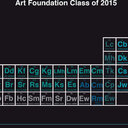Poly(ADP-ribose) polymerase inhibition protects epileptic hippocampal neurons from apoptosis via suppressing Akt-mediated apoptosis-inducing factor translocation in vitro.
Từ khóa
trừu tượng
Inhibition of poly(ADP-ribose) polymerase (PARP) has been proposed to have a neuroprotective effect on hippocampal neurons in animal models of epilepsy. However, the mechanisms of PARP-mediated epileptic neuron apoptosis in vitro are still not thoroughly understood. Therefore, we investigated the effect of PARP inhibition and the underlying mechanisms in the hippocampal neuronal culture model of acquired epilepsy which is generally accepted as the neuronal culture model of spontaneous seizure discharge in vitro. As a result, PARP was activated and the administration of 3,4-dihydro-5-[4-(1-piperidinyl)butoxy]-1(2H)-isoquinolinone (DPQ), an inhibitor of PARP, significantly decreased the percentage of neuron apoptosis induced by Mg(2+)-free treatment. Western blot and confocal laser scanning microscopy (CLSM) analysis showed that DPQ increased the phosphorylation of Akt and attenuated mitochondria-nucleus translocation of the apoptosis-inducing factor (AIF). Furthermore, wortmannin, an inhibitor of PI-3K, inhibited the translocation of AIF to the nucleus. The results of the present study demonstrated that the inhibition of PARP might have therapeutic value in seizure-induced hippocampal neuron damage in vitro via suppressing Akt-mediated AIF translocation.



